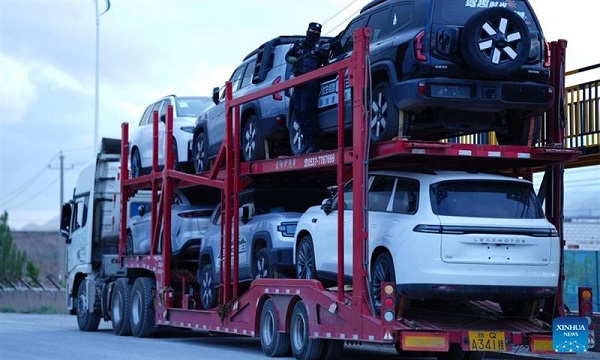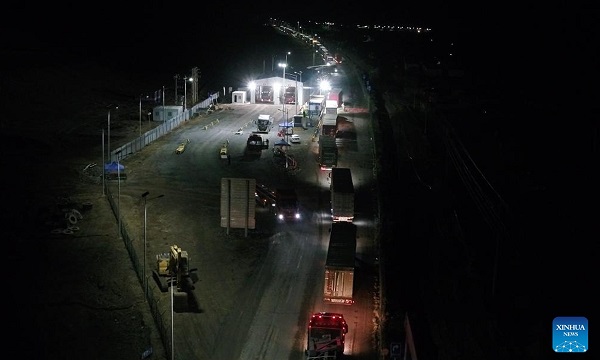On Sunday, 1 June 2025, the Irkeshtam checkpoint, located in the Xinjiang Uygur Autonomous Region in northwest China, began testing a 24-hour cargo clearance mode, according to Xinhua.
This makes Irkeshtam the second land port in the region, following Khorgos on the China-Kazakhstan border, and the first in southern Xinjiang to implement such a system.
According to the local immigration inspection authority, this step aims to enhance trade logistics between China and Central Asian countries.
Irkeshtam, China’s westernmost land port on the border with Kyrgyzstan, serves as a key gateway to Kyrgyzstan and a vital hub for Central and Western Asia. With growing cross-border activity and steady demand for cargo transportation, the checkpoint is becoming increasingly significant for the region.
To ensure seamless 24-hour operations, the Irkeshtam inspection point optimized its staffing through shift rotations and introduced an “on-arrival inspection” system for cargo vehicles, striking a balance between security and efficiency.
Jiang Zhidong, chairman of Xinjiang Jiujiuxi International Trade Co., Ltd., based in Kashgar, noted that the 24-hour operation mode will significantly improve cargo transportation efficiency, reduce logistics costs, boost port operations, and unlock new potential for foreign trade.
Statistics show that in 2025, Irkeshtam recorded significant growth in passenger and cargo traffic. By Sunday, the checkpoint had processed over 105,800 trips and 98,500 vehicles, marking an 80% and 79% increase, respectively, compared to the previous year.
Currently, clothing, shoes, consumer goods, cars and their components, mechanical equipment and household appliances are mainly transported from China through the Irkeshtam checkpoint, while coal, raw materials for the textile industry and agricultural products are imported into China.
In March of this year, an industrial park for processing agricultural and by–products was opened on the territory of the Irkeshtam port, including a site for controlling imported grain crops – this is the first such facility on the border of China and Kyrgyzstan, as well as in the entire southern part of Xinjiang.///nCa, 4 June 2025

